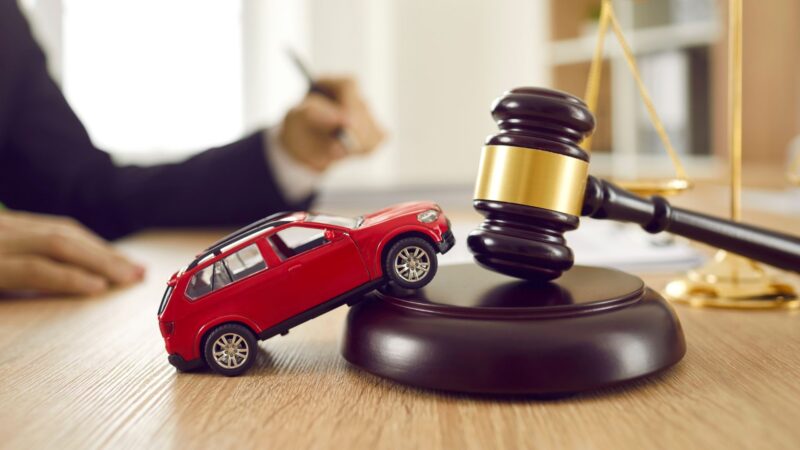Proving you’re not at fault in a car accident can mean the difference between getting compensation for all your damages, getting some compensation, or getting no compensation at all. In Washington, the driver who is at fault for an accident is required to pay for damage to other parties’ vehicles and for any injuries they may have suffered. While sometimes it’s clear who is at fault, oftentimes, fault is difficult to prove.
For instance, if you rear-end someone, you will likely be at fault for the accident. But if you rear-end someone because someone else hit you from behind at a high rate of speed, you might only be partially responsible for the accident, and the person who hit you will also be at fault.
In this post, the Brett McCandlis Brown & Conner PLLC team will help you understand how to prove you’re not at fault in a car accident and the importance of doing so in Washington State.
What Is “Fault”?
Before learning how to prove fault in a car accident, it’s important to know what “fault” is and how it helps determine how much compensation you can be eligible to receive.
Fault is a concept that lets an injured person recover compensation for harm suffered when another person or entity causes them injury. When someone is “at fault” for an accident, that means they can be held legally responsible for the damages they caused someone else.
Who Is At Fault In Car Accident?
In car accidents, determining fault is crucial as it dictates who is responsible for damages. The individual who caused the accident is typically at fault, making their insurance company liable for compensating any injuries or damages incurred by others involved in the incident. This principle underscores the importance of fault in accident-related insurance claims and legal proceedings.
Fault vs. No Fault
When it comes to car accident cases, you may hear the terms “fault” and “no fault.” In a “fault” state, the person who is deemed to have caused the accident—or, usually, their insurance company—pays for the injured party’s damages. In a “no-fault” state, each party’s insurance company pays their policyholder’s damages, regardless of whose fault the accident was.
Why Proving You’re Not At Fault in a Car Accident Matters
As we mentioned, when you have a car accident in “fault” states, like Washington, the person at fault for the crash must pay for the losses of the other driver, passengers, and anyone else harmed in the accident. These damages can include things like car repairs, medical bills, lost income, and pain and suffering.
Contributory Fault
Proving you’re not at fault in a car accident is extremely important in a “fault” state. However, if you and the other driver share responsibility for the accident, you might still be able to recoup some of your damages. That’s because Washington law applies a rule called contributory negligence. Contributory negligence allows you to recover damages even if you’re partially at fault for an accident. However, your compensation will be reduced by your share of the fault.
For example, imagine you hit a motorcycle speeding through an intersection. You might be 51% at fault because you made an unsafe left turn. However, the motorcyclist might be 49% at fault for racing through the intersection at 75 miles per hour in a 45-mile-per-hour zone. Your insurance company might only have to pay 51% of the motorcyclist’s damages because they were 49% at fault.
Is Washington A No-Fault State?
Washington State operates under a tort system, not a no-fault system. Instead, it operates under a ‘comparative fault’ system for car accidents. This means that in Washington State, the degree of fault is assessed for all parties involved in an accident. Compensation for damages is then determined based on each party’s level of fault, allowing for a more nuanced approach to resolving claims. In Washington State, even if you’re involved in a car accident without insurance but are not at fault, you retain the right to seek compensation from the at-fault driver or their insurance company. This is by state laws that protect the rights of all parties involved in traffic incidents, regardless of their insurance status.
Steps You Can Take to Demonstrate You Are Not At Fault After an Accident
Safeguarding your health and safety should be your top priority after a car accident. However, taking the following steps can help you and your car accident attorney in Washington state strengthen your compensation claim.
Get a Police Report
When you’re wondering how to prove you are not at fault in a car accident, one of the most powerful tools in your arsenal is a police report. Your insurance company will want to see the police report anyway, so it will be helpful to get a copy as soon as you can. It is your legal right to have a copy, so do not be afraid to ask.
The police report may contain information you haven’t seen before, including the responding officer’s thoughts and perceptions of the scene of the crash. Once you see the report, if you spot any factual errors, a skilled car accident lawyer in Washington can help you provide the reporting officer with an addendum to attach to the report.
Collect the Other Driver’s Information at the Scene
Exchange information with all drivers and others involved in your accident. Obtain names, driver’s license numbers, insurance company names and policy numbers, and perhaps most important, phone numbers and email addresses. Be sure to jot down the license plate numbers of any other vehicles involved in the crash too.
Document the Scene and Any Vehicle Damage
Take pictures at the scene of the crash and document any vehicle damage, if possible. Any damage to your car can tell a story about the accident. For example, front bumper damage to the other driver’s car and a rear-bumper dent in yours speaks volumes about what happened.
Do Not Admit Fault
Never admit fault. Even casual admissions of fault to a witness or another driver can come back to bite you later. Being overly polite at the scene of an accident can cost you thousands. Be cordial and firm, but never admit fault or apologize.
Talk with Witnesses
Obtain contact information from any neutral witnesses to the accident, such as pedestrians and other bystanders. They may be able to provide valuable information later that can help you prove fault.
Hire an Attorney
An attorney who understands how to prove you are not at fault in a car accident can be the most valuable resource of all. Attorneys deal with car insurance companies every day and are able to obtain information you might not be aware of or be able to access. If you’re in a car accident, especially if you are injured, contact a car accident attorney immediately.
How Brett McCandlis Brown & Conner Can Help
When you work with Brett McCandlis Brown & Conner, we will fight for you to get the compensation you deserve. We know the challenges car accident victims face and will zealously advocate for you at the negotiating table and in the courtroom. You shouldn’t have to pay for injuries and losses that someone else caused. Let us put our years of experience to work for you. Contact our office today to schedule an initial meeting. We offer free consultations, so you have nothing to lose by meeting with us.


